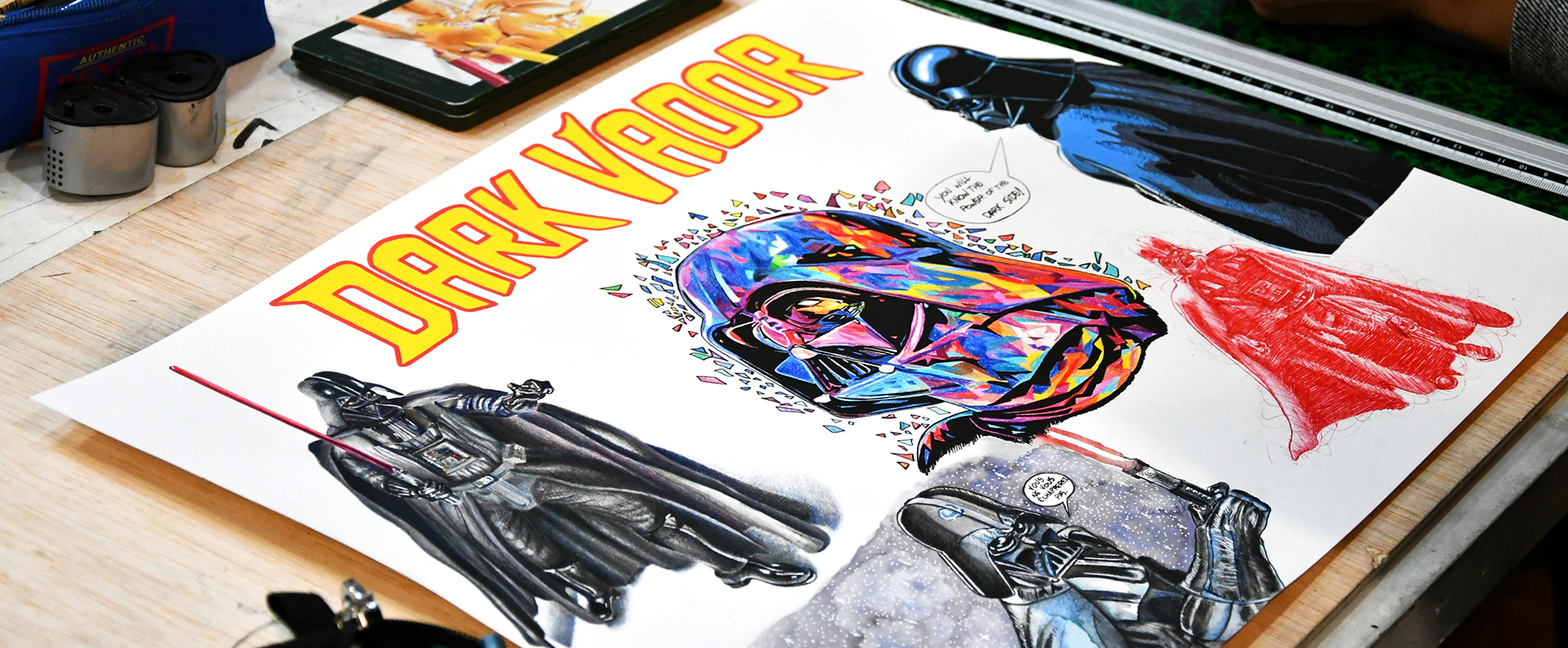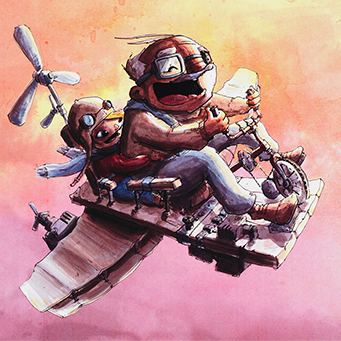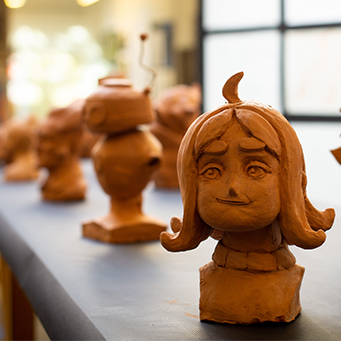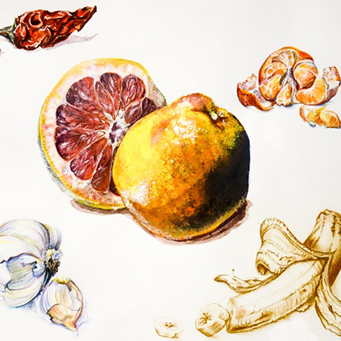Discover, experiment, conceive and explore
The animation & game foundation year course is a one-year introductory course where students learn the fundamentals of drawing and are introduced to the production techniques used in animated films and video games. This course also introduces students to the different areas of the digital sector (gaming, film, special effects, etc.), and develops their open-mindedness and fosters team work, which are two crucial skills for working in this industry.

Lucas SimeoneBeing a part of ECV’s Game course allows me to gain the knowledge and skills required for getting hired as a concept artist at a major video game company.
Courses
Learning how to draw helps to gain an understanding of how shapes are formed and the role of light and composition. Through a notebook and personal research, students nourish their visual culture on a daily basis and learn how to recognize, experiment and memorize. In such a way, they develop autonomy and a critical eye through careful practice.
Students practice sketching in an environment outside of the school such as museum exhibits, public gardens, train stations and streets. The drawing of architectural spaces and statuary develops respect for proportions, volume and perspective, in the foreground and background. Students learn how to make choices, capture the essence, and draw quickly.
The art of colours, their combinations and interactions is an essential component of learning to draw. Students study colour theory, the colour wheel, the relationships between colours, and put their knowledge into practice. They learn how to see colour, simplify it, and apply it in successive touches to build volume.
Students need to restore the complexity of volume and space into two dimensions following the theory of perspective. Learning spatial geometry allows them to evaluate real depth effectively compared to pictorial depth. In a theoretical approach, perspective complements direct observation.
Illustration is a discipline in which students can fully express themselves. Unlike drawing classes, illustration is always based on an idea, narration or even music. It is one of the major forms of expression in graphic arts. A wide variety of techniques are used, enabling each student to develop his or her personal writing and style.
Controlling the rules of building shapes, students create threedimensional models to illustrate volume with paper, cardboard or any other available materials.
Digital animation, by means of video games, has infiltrated the traditional animation sector, in addition to television and the Web. Creating backgrounds and characters, inventing worlds and bringing them to life, require an equal dose of imagination and software expertise. This introductory course will expose students to narration and storyboard editing techniques, as well as modeling and 3D animation software (After Effects, 3DS Max…).
Character design is a highly valued position in video game and animation studios. Charisma, proportions and style are all key factors in the creation of a good character. Beyond the actual drawing, students need to capture the character’s typology by defining its psychological and sociological attributes to create a better design. These are also determining factors for the animation in production.
A broad knowledge of film is vital for a good introduction to all aspects of film production. Deciphering and analyzing the greatest movies promotes a better understanding of the language of film.
The main assistant to the director, the storyboarder divides a story into images and makes framing and editing decisions. After scripting their stories, students will learn how to illustrate short sequences in precise images, an essential step in film production.




